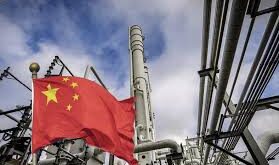On March 13, President Trump proposed using the Department of Energy to buy oil for the Strategic Petroleum Reserve (SPR) in a bid to soak up some surplus oil from the market.
Oil prices received a jolt on the news just before the close of trading on Friday. However, the rally was brief. Given the unprecedented meltdown in the oil market, the amount of oil that can be diverted into the SPR will likely be of little consequence.
Refilling the SPR
After lobbying from some oil executives, President Trump unveiled some help for the crisis-stricken oil industry on Friday. He said that the U.S. Department of Energy would buy oil for the SPR and “fill it right to the top.” The move would reverse several years of modest sales from the SPR for budgetary reasons and present the U.S. government with an opportunity to fill the SPR at low prices, increasing the value of future sales.
The SPR has roughly 78.5 million barrels of available storage. “SPR purchases – akin to a transient boost to demand – would…increase the equilibrium price at which the global oil market rebalances by $2/bbl on our pricing model,” Goldman Sachs wrote in a note on Sunday.
Funneling surplus oil into storage would “help offset the decline in US exports set to occur.” Brent has crashed much more sharply than WTI, narrowing the two benchmarks. That may shut the oil export window for U.S. oil producers to some degree. The logic of SPR purchases is that they can mop up some extra barrels.
But there are some immediate hurdles standing in the way. The plan needs Congressional authorization, and analysts say that could be “problematic.” The DOE has some leeway to use proceeds from past SPR sales to fund the purchases of oil, but the agency probably cannot fulfill the president’s request without help from Congress.
In addition, there are logistical bottlenecks that might prevent the U.S. government from a speedy pace of injection.
More importantly, even if everything goes smoothly, the SPR cannot compensate for the dual crises hitting the oil market at once. The OPEC+ deal has fallen apart, resulting in an oil supply shock as Saudi Arabia and other major producers engage in a price war. Simultaneously, the coronavirus is spreading rapidly, and so too are lockdown measures, grinding economic activity to a halt. The negative demand shock could be even larger than the wave of supply washing over the market. Combined, they create an unprecedented glut that has crashed oil prices and will likely drive them lower still.
Global downturn deepens
The SPR plan is almost trivial given the scale of the crisis. “[T]he peak pace of SPR injection of 0.5 mb/d remains well short of the current surplus of 6 mb/d,” Goldman Sachs analysts said. Private oil trader Trafigura says demand destruction could reach 10 million barrels per day, or about 10 percent of total world oil demand.
A price war at a time of a global pandemic and a potential economic recession could translate into the “most extreme global oil supply surplus ever recorded,” according to IHS Markit. The firm estimates oil inventories will build by 800 million barrels to 1.3 billion barrels in the first six months of 2020. By way of comparison, the previous largest buildup of inventories in the past two decades occurred in 2015, which saw an increase of just 352 million barrels.
Against that backdrop, any effort to prop up unprofitable shale drilling could “delay the rationalization needed for the shale sector,” analysts with Goldman Sachs said in their report. Because OPEC+ producers are pursuing a market share strategy, U.S. government efforts to help domestic drillers will “only end up slightly delaying the rebalancing” target. Such plans are “sub-optimal to the US economic growth potential.”
The modest boost to oil prices shortly after President Trump unveiled the SPR plan was more than wiped out on Monday. Prices may go even lower. “[W]e don’t believe that these SPR purchases will be meaningful enough to reverse the increasingly likely risk that prices fall below our 2Q-3Q20 $30/bbl Brent forecast to cash-costs.”
Goldman Sachs says that prices ultimately need to drop below levels where shale E&Ps can cover their immediate drilling costs, which the bank says is in the mid-$20s. Shale companies have been quick to announce spending cutbacks. On Monday, for instance, EOG Resources and Whiting Petroleum each said they would cut spending by about 30 percent. They were far from the only ones.
Because of the steep decline rates endemic to shale drilling, production could soon begin to decline. IHS Markit estimates that U.S. shale supply could contract by 2 to 4 million barrels per day over the next 18 months.

 Iran Energy News Oil, Gas, Petrochemical and Energy Field Specialized Channel
Iran Energy News Oil, Gas, Petrochemical and Energy Field Specialized Channel



